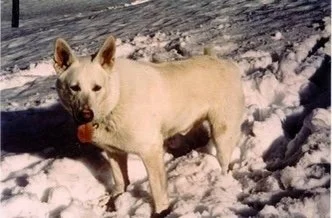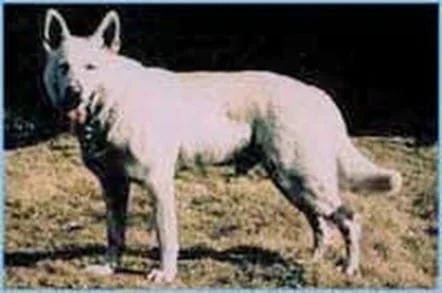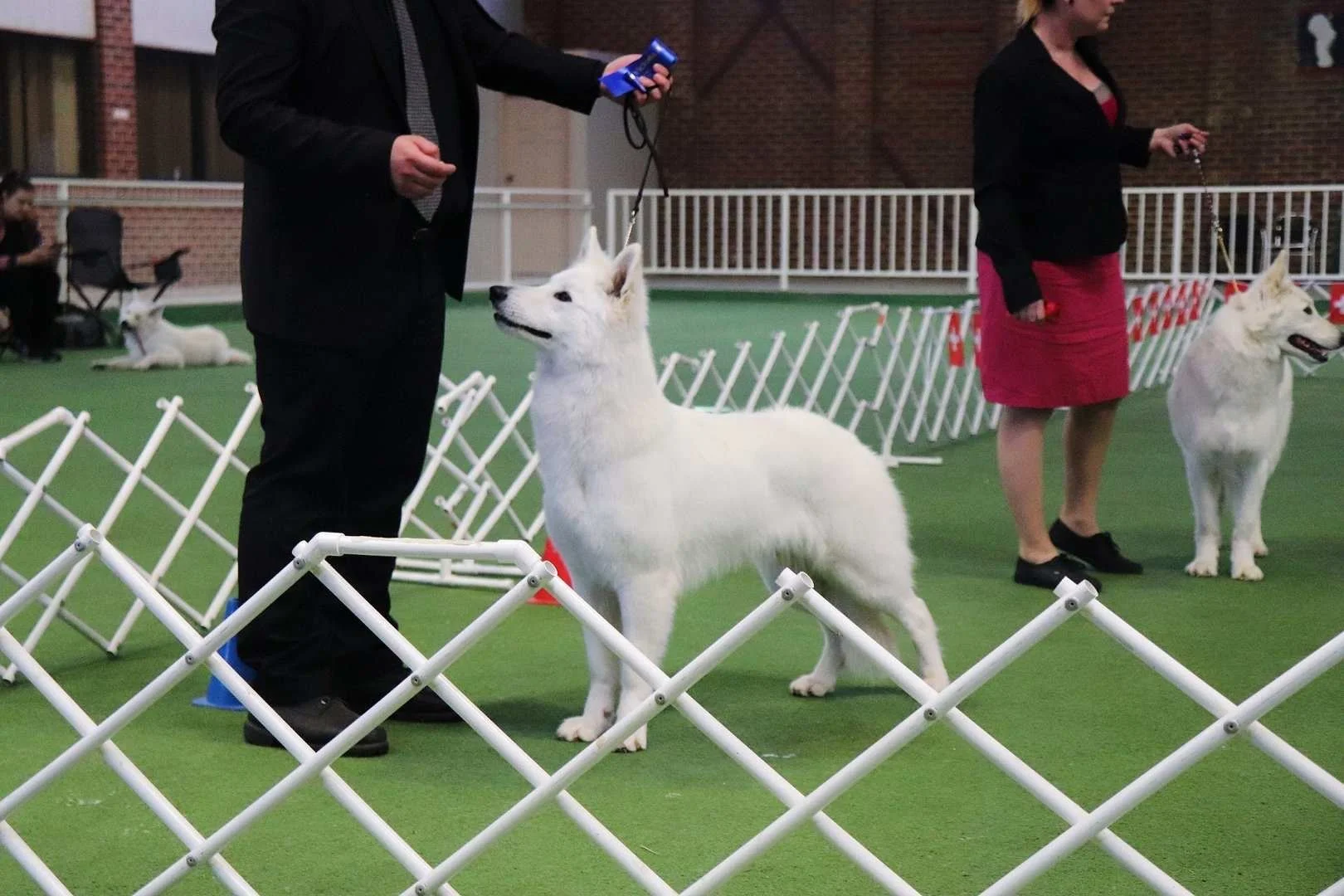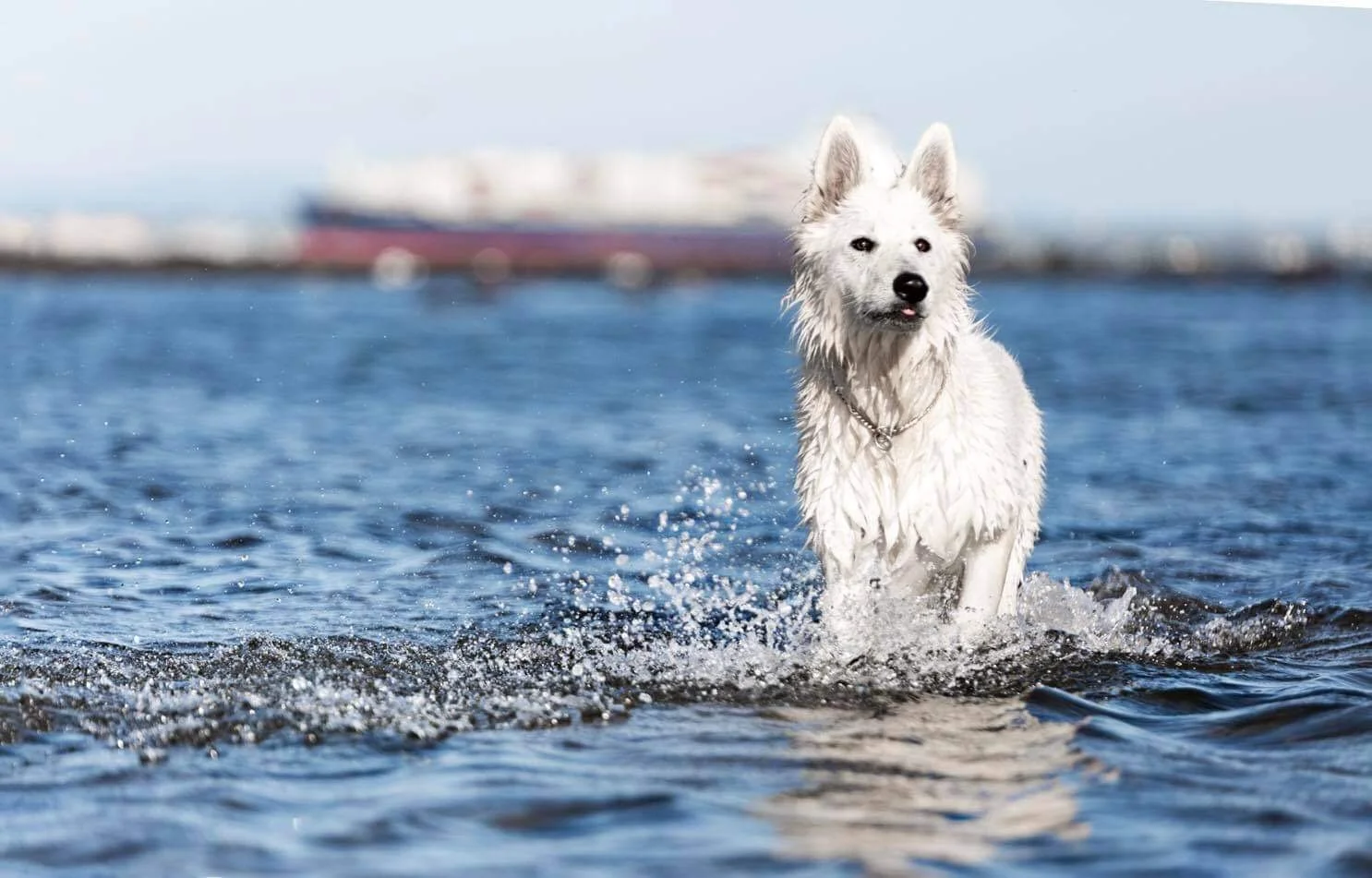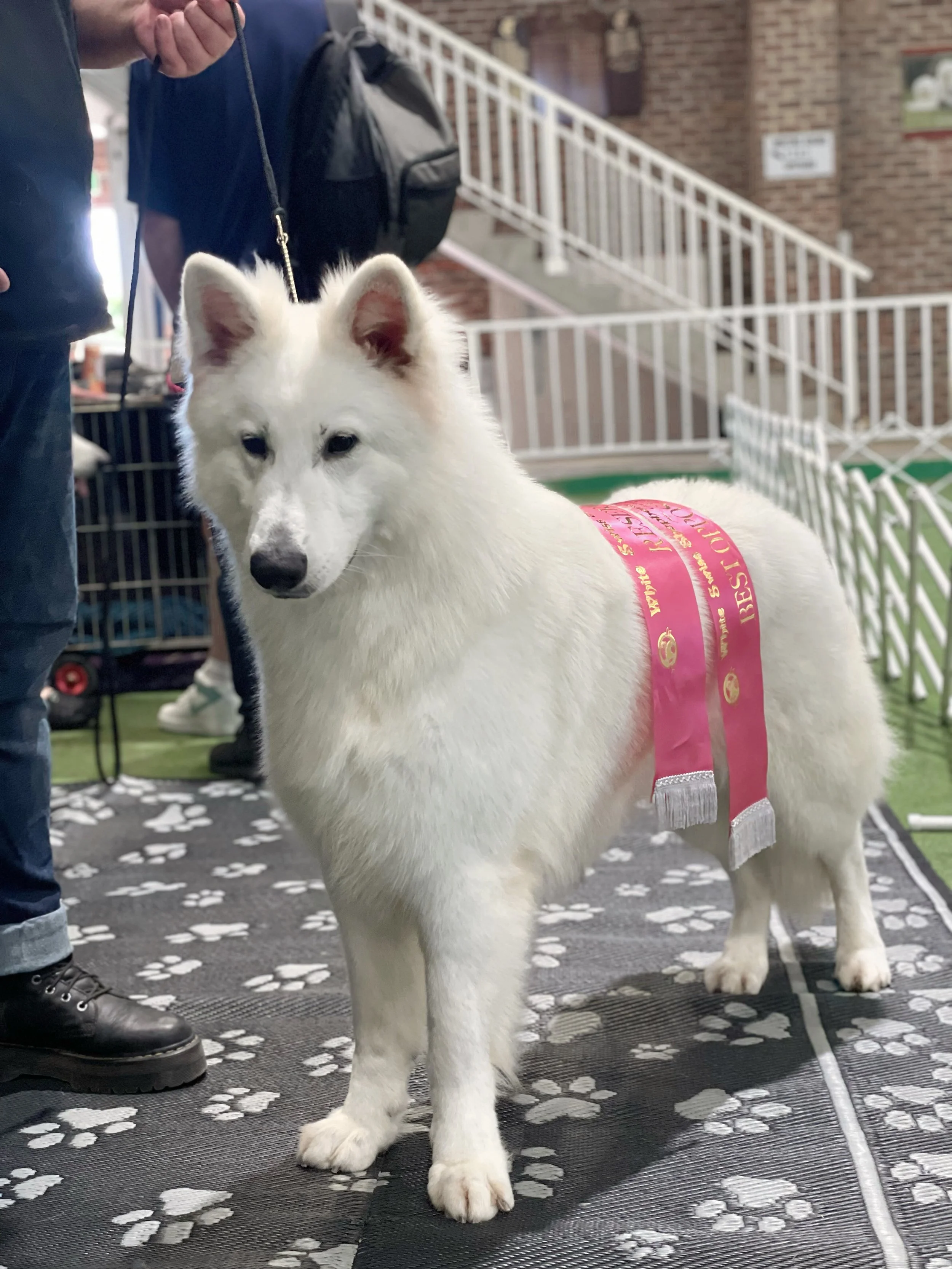About White Swiss Shepherd
The white coloring in Shepherd dogs originates from the white sheepherding dogs of the 1800s, which played a crucial role in the formation of the modern German Shepherd breed. Early records on the German Shepherd Dog mention white herding dogs with upright ears and a body structure resembling that of the German Shepherd Dogs we know today. Many early herdsmen favored the white coat for its distinguishability from darker European wolves. The Royal House of Hapsburg in Alsace-Lorraine, Austria, made significant efforts to breed a pure strain of White Shepherd puppies before the 1900s. Legend has it that the Queen of Hapsburg desired White Shepherds to complement their white gowns and the magnificent Lipizzan horses. The White Swiss Shepherd Dog, also known as the Berger Blanc Suisse, has emerged from the white lines of the German Shepherd Dog. While genetically similar, the White Swiss Shepherd differs in conformation and movement from the German Shepherd Dogs commonly seen in show rings today. Both breeds have undergone distinct evolutionary paths over a quarter-century and possess their own unique Breed Standards
Lobo of White Burch born in 1967
The White Swiss Shepherd's journey spans over a century, despite being considered a recent addition to the canine world. Its origins trace back to Germany, where a white sheepdog captured the attention of a German cavalry officer aspiring to breed an exceptional sheepherding dog. In an era where a dog's worth was solely determined by its working abilities, Captain Max Von Stephanitz, the visionary behind the breed, prioritized traits such as obedience, nobility, endurance, and the strength to fend off intruders over concerns about the dog's white ancestry.
Horand Von Grafrath, the first German Shepherd, descended from Horand, was selectively bred to consolidate the desired traits. This breeding strategy also ensured the transmission of color genes from Horand's white grandfather, Grieff, to future generations of the German herding breed. Thus, the white coat characteristic in Shepherd dogs can be traced back to the white sheepherding dogs of the 1800s, instrumental in shaping the modern German Shepherd breed.
However, the White German Shepherd faced a downturn in 1959 when German regulatory bodies labeled them as Albino and imposed strict standards, prohibiting dogs with more than 50% white or full white coats. This decision had severe repercussions, leading some countries to cease registering them altogether or disqualify them from registration. Despite these challenges, enthusiasts in countries like America and England maintained registration, and the first breed club exclusively for White German Shepherds was established in the US in 1964, allowing them to participate in specialty shows.
The emergence of the White Swiss Shepherd began to take shape in 1967 when Agatha Burch returned to Switzerland with her American White German Shepherd stud, Lobo of White Burch. The introduction of Lobo and other imports from England led to the establishment of the Shangrila breeding lines, which were eventually intertwined with remaining White German Shepherd populations and other American/Canadian imports. In 1989, the "White Shepherd Dog Society Switzerland" was formed, encompassing English and American registered dogs, as well as local unregistered ones. This society gained official recognition from the Swiss Kennel Club in 1991, enabling White Shepherds to participate in official shows across Switzerland.
After years of advocacy, the FCI provisionally recognized the White Shepherd as a distinct breed, named the White Swiss Shepherd, with Switzerland acknowledged as the country of origin. This recognition was not without controversy, given the international contributions to the breed. However, countries affiliated with the FCI accepted the provisionally registered White Swiss Shepherd breed, accommodating local unregistered White Shepherd bloodlines through development registers.
The White Swiss Shepherd (Berger Blanc Suisse), White German Shepherd, and White Shepherd are distinct breeds with their own standards. The White Swiss Shepherd, also known as the Berger Blanc Suisse, is recognized by the FCI in Europe. The White German Shepherd is acknowledged by the AKC, albeit disqualified for show due to its color, while the White Shepherd is recognized by the UKC. Despite their differences, there is significant historical and characteristic overlap among all three breeds.
In terms of disposition, the AKC German Shepherd standard emphasizes a strong prey drive and a "fearless and direct" personality, making it an ideal police and guard dog. In contrast, the White Swiss Shepherd standard prioritizes a mellower, gentler demeanor, with the breed often excelling as therapy or service dogs rather than in law enforcement roles. The personality of a White Shepherd, as represented by AWSA, may vary depending on the breeder's standards and breeding goals.
Regarding physical characteristics, the most notable distinction between the White Swiss Shepherd (BBS) and the White German Shepherd lies in hip angulation. The White Swiss Shepherd standard advocates for a more upright stance, while the White German Shepherd adheres to the AKC's standard, which often features a more pronounced angulation.
White Swiss Shepherd / Berger Blanc Suisse vs White German Shepherd vs White Shepherds
White Swiss Shepherd Standard
Appearance
A powerful, well-muscled, mediumsized, White Shepherd dog with erect ears, double coat which is either of medium length or long; elongated shape; medium sized bone and elegant, harmonious outline.
Temperament
Lively and balanced temperament, enjoys action, attentive with good ability to be trained. Friendly and discreet. High social competence and devoted to his owner. Never afraid or aggressive without provocation. A joyful and easy to teach working and sporting dog with capability for all round education. High social competence allows for a marked ability to adapt and integrate to all kinds of social events and situations.
Sizes
Height at the withers:
Males: 58 - 66 cms. Females: 53 - 61 cms.
Weight: Males: ca. 30 - 40 kgs. Females: ca. 25 - 35 kgs.
Typical dogs slightly under- or oversized should not be disqualified.
CRANIAL REGION:
Strong, clean cut and finely chiselled, in good proportion to the body. Wedge-shaped, seen from above and from
the side. Axes of skull and muzzle parallel.
Skull: Only slightly rounded; central furrow only slightly perceptible.
Stop: Slightly marked, but clearly perceptible.
FACIAL REGION:
Nose: Medium-sized; black pigmentation desired; snow nose and lighter nose accepted.
Muzzle: Powerful and moderately long in relation to the skull; nasal bridge and lower line of muzzle straight, slightly convergent towards the nose.
Lips: Dry, closing tightly, as black as possible.
Eyes
Medium-sized, almond shaped, placed a little obliquely; colour brown to dark-brown; eye lids well fitting with black eye-rims desirable.
Ears
Erect ears, set high, parallel and directed forward; in the shape of an elongated triangle with the tip slightly rounded.
Mouths
Jaws/Teeth: Powerful and complete, scissor bite. The teeth should be set square to the jaw.
Necks
Moderately long and well muscled, with harmonious set-on to the body, without dewlap; the elegantly arched neckline runs in a continuous line from the moderately high carried head to the withers.
Forequarters:
General appearance: Strong, sinewy, medium bone. Straight, seen from the front; only moderately broad stance; seen in profile, well angulated.
Shoulder: Shoulder blade long and well laid back; well angulated; whole shoulder strongly muscled.
Upper arm: Adequately long, strong muscles.
Elbow: Close fitting.
Forearm: Long, straight, sinewy.
Metacarpus (Pastern): Firm and only slightly oblique.
Body:
Top line: Strong, muscular, medium-long.
Withers: Pronounced.
Back: Level, firm.
Loin: Strongly muscled.
Croup: Long and of medium width; gently sloping from the set-on to root of tail.
Chest: Not too broad; deep (about 50 % of the height at the withers); reaching to the elbows; ribcage oval; extending well to the rear. Prominent fore chest.
Underline and belly: Flanks slender, firm; underline moderately tucked up.
More informations
https://dogsaustralia.org.au/members/breeds/breed-standards/White-Swiss-Shepherd-Dog


